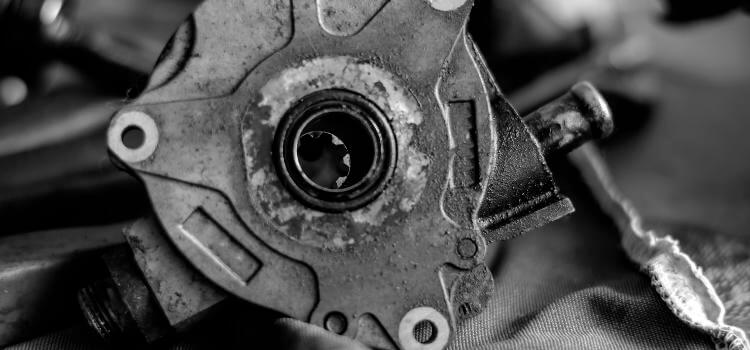As an Amazon Associate, I earn from qualifying purchases
Understanding Vacuum Pump Oil
Vacuum pump oil is a crucial component in the operation of vacuum pumps, which are widely used in various industries, including manufacturing, automotive, and laboratory settings. The oil serves multiple functions, such as lubricating moving parts, sealing, and cooling the pump.
Importance of Regular Oil Changes
Regularly changing vacuum pump oil is vital for maintaining effipumps and longevity. Contaminated or degraded oil can lead to increased wear and tear, reduced performance, and pump failure.

Types of Vacuum Pump Oils
Mineral Oils
Mineral oils are derived from petroleum and are commonly used in many vacuum pumps due to their affordability and availability. They suit general applications but may not perform well under extreme conditions.
Synthetic Oils
Synthetic oils are engineered to provide superior performance and longevity. They are more stable at high temperatures and have better resistance to chemical contamination, making them ideal for demanding applications.
Specialty Oils
Specialty oils are formulated for specific applications requiring high chemical resistance or low vapor pressure. These oils are often used in laboratory or high-tech environments where precision and purity are paramount.
Factors Influencing Oil Change Frequency
Operational Environment
The vacuum pump’s environment plays a significant role in determining how often the oil should be changed. Pumps operating in dusty, humid, or chemically aggressive environments will require more frequent oil changes.
Usage Intensity
The frequency and duration of pump operation also affect oil change intervals. Pumps used continuously or under heavy loads will degrade oil faster than those used intermittently or under lighter loads.
Manufacturer Recommendations
Each vacuum pump manufacturer provides specific guidelines for oil change intervals based on the operational parameters of their equipment. Adhering to these recommendations is crucial for optimal performance and warranty compliance.
Symptoms of Oil Degradation
Increased Operating Temperature
As vacuum pump oil degrades, it loses its ability to cool the pump effectively, leading to increased operating temperatures. Monitoring the pump’s temperature can provide early indications of oil degradation.
Noise and Vibration
Unusual noise and vibration during pump operation can signal that the oil has lost its lubricating properties, causing increased friction and wear on moving parts.
Reduced Pump Efficiency
A decline in vacuum performance or increased time to achieve the desired vacuum level can indicate that the oil is contaminated or degraded, impacting the pump’s effipumps.
Diagnosing Oil Condition
Visual Inspection
Regular visual inspections of the oil can reveal signs of contamination, such as discoloration, cloudiness, or particulates.
Oil Analysis
Laboratory analysis of oil samples can provide detailed information on their condition, including contaminants, viscosity changes, and chemical breakdown products.
Monitoring Oil Life
Some advanced vacuum pumps have sensors and software that monitor oil conditions in real-time and provide alerts when oil changes are necessary.

Steps to Change Vacuum Pump Oil
Preparation
Gather the necessary tools and materials, including the correct type and amount of replacement oil, a drain pan, and any required wrenches or screwdrivers.
Draining Old Oil
Ensure the pump is turned off and cooled down. Locate the drain plug, place the drain pan underneath, and remove the plug to ultimately allow the old oil to flow out.
Cleaning the Pump
Inspect and clean the oil reservoir and any filters or screens to remove any accumulated sludge or debris.
Adding New Oil
Replace the drain plug and fill the pump with the recommended type and amount of new oil. Ensure the oil level is correct and replace any caps or covers.
Testing the Pump
Restart the pump and observe its operation for any signs of leaks, unusual noises, or vibrations. Recheck the oil level after a short period of operation and top up if necessary.
Preventive Measures
Regular Maintenance Schedule
Establishing a regular maintenance schedule, including periodic oil changes, can prevent issues and extend the life of the vacuum pump.
Use of High-Quality Oils
Investing in high-quality oils can enhance pump performance and reduce the frequency of oil changes.
Proper Storage and Handling
Store vacuum pump oil in a clean, dry place and handle it carefully to prevent contamination.

Personal Stories and Case Studies
Manufacturing Plant
A case study from a manufacturing plant revealed that implementing a strict oil change schedule reduced pump failures by 50% and increased overall equipment efficiency.
Laboratory Setting
In a laboratory setting, regular oil analysis and timely oil changes ensured the precision and reliability of sensitive experiments, demonstrating the critical role of oil maintenance.
Expert Insights
Industry Professionals
Quotes from industry professionals highlight the importance of regular oil changes and provide tips on best practices for maintaining vacuum pumps.
Conclusion
Summary of Key Points
Regularly changing vacuum pump oil is essential for maintaining the equipment’s efficiency and longevity. Factors such as operational environment, usage intensity, and manufacturer recommendations should guide oil change intervals.
As an Amazon Associate, I earn from qualifying purchases